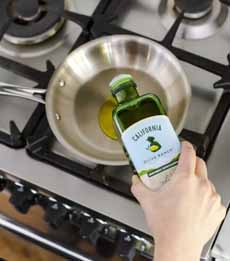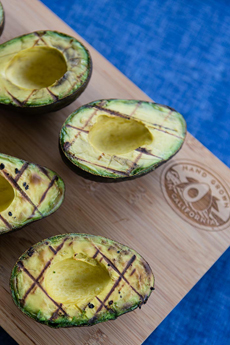TIP OF THE DAY: What Are Healthy Fats?
|
|
Recent research from Harvard Medical School has revealed that when it comes to maintaining health, the type of fat consumed is much more impactful than the amount of fat. The nutritionist-recommended Mediterranean Diet includes many foods with high levels of unsaturated fats, like nuts, fish and extra virgin olive oil. Thanks to California Olive Ranch, producers of extra virgin olive oil (photo #1), for today’s tip. What are unsaturated fats and what is makes them such an important part of a healthy diet? Scientifically, “unsaturated” fats refer to fatty acid chains that contain at least one double bond in their structure (image #2). When a fatty acid contains a double bond, it is less stable, and more difficult for the body to absorb and store as fat. Monounsaturated fat is one of the healthy fats, along with polyunsaturated fat. They are a type of fatty acid that have one unsaturated carbon bond in the molecule (image #2). Those that are typically liquid at room temperature (e.g. olive oil) start to harden when chilled. This is the opposite of saturated fats like butter and trans fats*, which are not good for you. Monounsaturated fats are found in plant foods such as vegetable oils, nuts, avocados and olives. It is these monounsaturated fats that are central to the Mediterranean lifestyle. Eating moderate amounts of monounsaturated (and polyunsaturated) fats in place of saturated and trans fats can benefit your health. Polyunsaturated fats include the antioxidants omega-3 and omega-6. Omega-3 is especially important for us to eat, since the body cannot produce it. Both omegas are strong protectors against heart disease. That’s why extra virgin olive oil is so important in your diet. It contains, on average, 15% polyunsaturated fats, mostly linoleic acid. |
|
|
What To Eat Foods high in omega-3 fatty acids include certain fish (herring, mackerel, oysters, salmon, sardines, trout, tuna and caviar!), ground flaxseed, certain oils (canola, flaxseed, soybean), and nuts and other seeds (walnuts, chia seeds). Other foods that are not as high in omega-3, but still have decent amounts, include pastured eggs, omega-3-enriched eggs, meats and dairy products from grass-fed animals, hemp seeds and vegetables like Brussels sprouts, purslane and spinach. Not to mention walnut pesto, tuna tartare, pastured/enriched eggs, and grass-fed meat and dairy. And, have all the Brussels sprouts and spinach you like! ________________ *From the Mayo Clinic: Most fats that have a high percentage of saturated fat or that contain trans fat are solid at room temperature. Because of this, they’re typically referred to as solid fats. They include beef fat, pork fat, butter, coconut oil, shortening and stick margarine.
|
||






